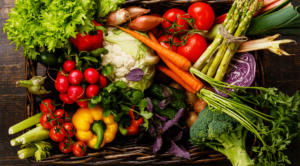
Poland’s Ministry of Agriculture and Rural Development said the competent Ukrainian service on Friday adopted a decision on the regionalization of Newcastle disease and lifted in this regard a complete ban on imports of Polish poultry products.
“The ban on imports of hatching eggs, live poultry and untreated poultry products and raw materials has been lifted, with the exception of areas affected by Newcastle disease virus, determined by the competent authority of the Republic of Poland,” the website of the Polish agency said.
According to the report, the restrictions do not apply to products that have undergone treatment that guarantees the destruction of the virus, in accordance with the requirements for the importation into the customs territory of Ukraine of live animals and their reproductive material, food products of animal origin, feed, hay, straw, as well as by-products of animal origin and derivative products, approved by the order of the Ministry of Agrarian Policy of Ukraine № 553 of November 16, 2018.
At the same time, the agency “Interfax-Ukraine” has not yet managed to find on the official websites of the Ukrainian Ministry, as well as the State Service of Ukraine for Food Safety and Consumer Protection relevant information on the lifting of the ban on imports of Polish poultry products to Ukraine.
As reported, on July 13, by the order of the Chief State Veterinary Inspector, a restriction was imposed on the import of hatching eggs, poultry and poultry products from Poland to Ukraine due to the registration of Newcastle disease in the country.
According to Polish mass media reports, the disease was detected for the first time in 50 years at a poultry farm in Bialystok district, where 43.41 thousand chickens are kept for slaughter. The Polish authorities have repeatedly asked the Ministry of Agrarian Policy to allow the export of these products to Ukraine, leaving the ban on supplies only for the regions where the disease was detected.

Ukraine imported “borscht set” vegetables, in particular potatoes, carrots, beets, cabbage and onions, worth $100.253 million in January-June 2023.
According to statistics released by the State Customs Service (SCS) on Monday, Ukraine imported 12.476 thousand tons of potatoes worth $8.641 million in the first six months of 2023.
At the same time, 27.29% of the market share of imported potatoes in the first half of this year belonged to Greece, which was able to earn $2.23 million from its sales. Potato shipments from Romania accounted for 12.66% worth $1.034 million, and from Azerbaijan – 9.67% and $970 thousand, respectively.
Ukraine had to import the entire “borscht set” during the most deficient in terms of vegetables in the first half of 2023. In particular, purchases of onions on foreign markets reached 0.16% of the country’s total imports, cabbage – 0.09%, carrots and beets – 0.06%. In total, market operators spent $93.882 mln to purchase these basic vegetables in the diet of Ukrainians (excluding potatoes).
The top three leading suppliers of “borscht set” vegetables in the group were importers from Poland and the Netherlands. They accounted for 43.5% and 31.6% of Ukraine’s onion imports, which amounted to $12.393 mln and $8.949 mln, respectively. The leading onion supplier was China with 8.3% of supplies worth $2.346 mln.
The leader in cabbage supplies to Ukraine was Poland, whose share in supplies amounted to 32% and brought $9.147 million to the neighboring country. Macedonia ranked second with 31.6%, for which it earned $9.034 million, while the Netherlands ranked third with 10.8% and $3.093 million, respectively.
Poland also turned out to be one of the leading suppliers of root vegetables – carrots, beets and celery – in the first half of 2023. The share of imports of these vegetables in the domestic market reached 46.9%, which in monetary terms amounted to $11.072 million. The best in supplies of these vegetables were the Netherlands and Turkey, whose supplies occupied 37.7% and 2.9% of the import share, which in monetary terms amounted to $8.899 million and $683 thousand, respectively.
The most demanded vegetables in winter-spring time in Ukraine are tomatoes and cucumbers. Import of tomatoes in the first half of 2023 amounted to 0.29% of all imports into the country, cucumbers – 0.07%, which amounted to 73.05 thousand tons and 28.182 thousand tons respectively.
The leader in supplying these vegetables to Ukraine was Turkey, which accounted for 77.4% of all imports of tomatoes and 46.8% of cucumbers in January-June 2023, which amounted to $45.5 million and $12.87 million, respectively.
The top three suppliers of tomatoes to Ukraine were Poland, which accounted for 20.37% of supplies worth $12.989 mln, and the Netherlands with 2.99% of supplies worth $1.9 mln.
In addition to Turkey, Ukraine bought cucumbers in the first half of 2023 from Romania, which fulfilled 35.33% of supplies worth $9.714 million, and Poland with 11.3% for $3.106 million, respectively.
Despite the shortage of vegetables in the country, Ukrainian agricultural producers managed to send small batches of them for export.
Ukrainian potatoes are forbidden to be supplied to the European market due to legislation not adapted to European requirements. Ukraine did not lose its traditional markets and managed to earn $11.251 million on the export of 19.854 thousand tons of potatoes, of which 50.7% went to Bulgaria, 39.7% to Azerbaijan, 9.05% to Moldova.
Cabbage exports from Ukraine amounted to 871 tons, of which 98% went to Bulgaria. Deliveries of onions, carrots and beets to foreign markets were practically not performed in the first half of 2023.
The sale of 781 tons of cucumbers on foreign markets brought Ukraine $1.905 million. The traditional buyer of greenhouse cucumbers is Poland, where in the first half of 2023 was made 96% of all exports of this vegetable, and the Baltic States, in particular, in Lithuania went 3% of Ukraine’s exported cucumbers.
Ukrainian farmers earned $463 thousand on export of 120 tons of greenhouse tomatoes, 86.5% of which were bought by Poland and 12.4% by Estonia.

According to customs statistics released by the State Customs Service of Ukraine, Ukraine reduced imports of lead and lead products by 71.8% to $583 thousand ($86 thousand), imports of tin and tin products by 39.3% to $1.130 million ($176 thousand), but increased imports of zinc and zinc products by 1.7% to $20.628 million ($4.708 million).
Zinc was shipped abroad for $72 thousand ($14 thousand in June) in six months, compared with $1.302 million in January-June-2022. Exports of tin and products amounted to $52 thousand ($3 thousand in June) against $392 thousand in the comparable reporting period last year.
Ukraine reduced imports of lead and lead products by 66.6% to $2.839 million.
Imports of tin and tin products fell by 33.5% to $3.312 million, and imports of zinc and zinc products decreased by 58.7% to $38.690 million.
Zinc exports for 2022 totaled $1.331 million, compared to $550 thousand in 2021. Exports of tin and tin products totaled $424 thousand in 2022, compared to $346 thousand the previous year.

Ukraine in the first six months of 2023 reduced imports of nickel and nickel products by 4.4 times compared to the same period of 2022 – to $7.699 million ($1.355 million in June), aluminum and aluminum products increased by 25.9% to $168.234 million ($31.461 million).
Exports of aluminum and aluminum products in January-June this year decreased by 0.9% year-on-year to $48.032 million ($8.297 million in June), lead and lead products decreased by 5.7% to $7.806 million ($1.121 million), nickel and nickel products totaled $125,000 ($18,000), compared to $1.266 million in the first half of 2022.
According to customs statistics released by the State Customs Service of Ukraine, Ukraine in 2022 reduced imports of nickel and nickel products by 49.9% compared to 2021 – to $59.754 million, aluminum and aluminum products – by 33.4%, to $340.398 million.
Exports of aluminum and aluminum products for 2022 decreased 42.7% from 2021 to $96.972 million, lead and lead products decreased 68.7% to $11.970 million, and nickel and nickel products decreased 73.9% to $1.268 million.

Ukrainian enterprises in January-June this year increased imports of copper and copper products in value terms by 97.1% compared to the same period last year – up to $56.288 million.
According to customs statistics released by the State Customs Service of Ukraine, exports of copper and copper products for the period decreased by 26.3% to $39.433 million.
In June, $8.672m worth of copper was imported and $5.732m worth of copper was exported.
As reported, Ukrainian companies in 2022 reduced imports of copper and copper products in value terms by 64.3% year-on-year to $65.370 million, while their exports decreased by 56.3% to $90.245 million.
Energy imports to Ukraine in 2021-2022

Source: Open4Business.com.ua and experts.news